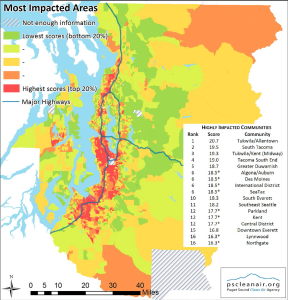For Immediate Release: August 3, 2015
Contact: Serena Larkin, serena@sightline.org, 206-447-1880 x111
SEATTLE // In Washington state and across America, communities of color and low-income neighborhoods are more likely to be exposed to air pollution and toxic chemicals, even while they often have fewer resources to respond to their harmful impacts. As Washington Governor Jay Inslee pushes ahead with a plan to cap carbon pollution in the state, the equity elements of his earlier proposal will be key to developing a successful and just policy.
To that end, a new report from Sightline Institute outlines different methods for identifying highly-impacted communities, what Washington has already done towards identifying them, and what Washington could do next.
“The Evergreen State should pass a polluters-pay policy that invests in those communities that have for years borne the brunt of racism, poverty, and environmental health impacts,” says the report’s author, Sightline senior researcher Kristin Eberhard. “By bringing a first-class statewide methodology to fruition, Washington would be ready to direct polluters-pay revenue to the communities that need it the most.”
Find the full report on Sightline Institute’s website at sightline.org/WACarbonEquity, or read more about it here.
###
Sightline Institute is an independent think tank providing leading original analysis of energy, economic, and environmental policy in the Pacific Northwest.







